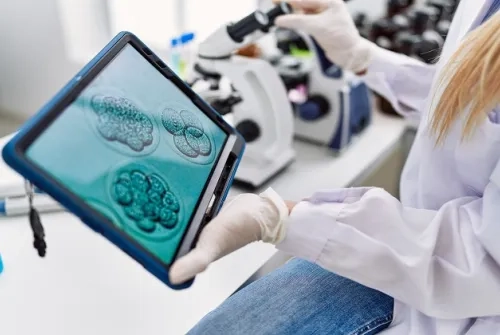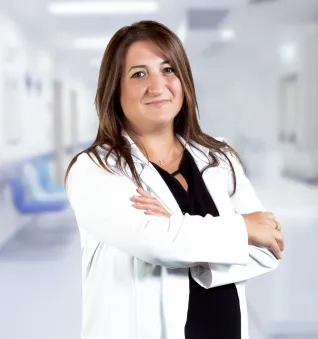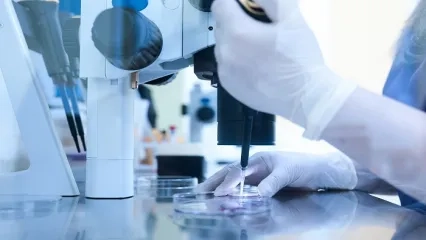Alo Yeditepe
Alo Yeditepe
Sperm Will Be Produced from Stem Cells Soon
Yeditepe University Histology-Embryology Specialist and In Vitro Fertilization Center Laboratory Director Lect. Dr. answered our questions about the role of men in IVF treatment...
What is the male factor rate in in vitro fertilization treatment?
Currently, the male factor plays a role in about 40-45 percent of patients applying for IVF treatment. When normal physiology is viewed, the sperm passes through many barriers before meeting the egg. The woman's natural fluids in the vagina and cervix, which we call mucus, have taken over this task. The low-quality sperm cells are eliminated here, and the healthy ones reach inside the uterus. The sperm cells that win this race are the best sperm cells with the ability to fertilize the egg.
What can be done in case of sperm deficiency?
A decrease in sperm count and motility eliminates the chance of pregnancy by natural means. The method applied in such cases to this day is the preparation of the sperm by subjecting them to special washing and sorting processes in the laboratory and the application of microinjection.
What can be done if there is no sperm in semen?
In some cases, although men have normal sperm production in the testicles, the sperm cannot get out due to blockages in the carrier pathways. In such cases, the sperm produced are surgically collected from the testicles with very thin needles. If live sperm cannot be found, sperm is searched for under a microscope in tissue samples taken from the testicles. The lack of sperm can sometimes be caused by production deficiency. Even if one or two sperm cells can be retrieved through 'microscopic TESE,' fertilization is ensured, and pregnancy can be achieved. This method has been groundbreaking in male infertility. Men who had no chance of being a father before this method have now captured the chance of being a father. However, in some cases, one can encounter unlucky cases in which no mature sperm production is observed despite this procedure.
May sperm be produced from stem cells in men without sperm soon?
Sperm production in the testicle starts from very small embryonic-like stem cells, also known as VSELs. These are very small and very few. The existence of these has also been understood in the last few years. A study conducted in 2016 also revealed that they were sensitive to hormones and could turn into sperm cells when stimulated. Last year, a piece of news from France, which reported that the transformation of stem cells into sperm cells with a developed tail structure had been achieved by using various stimulants, also created new hope. However, this study needs to be confirmed and improved with other studies. Rapidly continuing studies and preliminary developments on this subject are gratifying, but it is still necessary to wait for the final result.
What are the most current methods applied to choose the healthiest sperm?
ROS (Reactive Oxidative Stress) test, microchip, and PICSI methods are used to select healthy sperm cells.
What is the ROS (Reactive Oxidative Stress) test?
Oxidative stress is a condition that, due to the increase in reactive oxygen types, the current antioxidant levels in the body cannot compensate for the harmful effects of this increase on cells. Of the male factor infertility cases, 25 percent cannot be diagnosed. In these cases, even if the sperm values appear normal in terms of count, motility, and shape, in fact, an increase in reactive oxygen types is detected due to oxidative stress. Performing a ROS test allows the detection of idiopathic male infertility and earlier planning of the correct treatment.
What is the PICSI (Physiological Intra-cytoplasmic Sperm Injection) method?
The PISCI method is the selection of the sperm cells we use in microinjection using the property of binding to the hyaluronan substance. Hyaluronan is one of the main substances of the layer surrounding the egg, the female reproductive cell. There are regions in the head section of mature sperm cells that allow recognition of this substance. In sperm cells that have not reached adequate maturity and have excessive DNA fractures, fertilization rates will be lower, as there will be no egg recognition and binding in the absence of these regions. In the PICSI method, we select the sperm for microinjection using the sperm's property of binding to hyaluronan, which is a closer selection to natural fertilization. Thus higher fertilization is achieved, and embryos with better quality develop.
What is the microchip method?
The microchip IVF treatment developed recently has created hope for many couples. Developed by a Turkish scientist at Harvard, this method has also started to be applied in our country. Selecting quality sperm and eggs in IVF treatment is crucial for developing a quality embryo. The microchip method ensures that sperm cells that are closer to the natural and have the best DNA structure are selected using microfluidic technology. After microinjection is made with the sperm cells thus selected, better quality embryos are created, and thus successful results are obtained. After this method has entered into use, there has been a significant increase in the achieved pregnancy rates. This method is a crucial development in male infertility. Successful IVF centers that follow the innovations have switched to this application.
How is the microchip method applied?
Sperm chips that will help the selection of healthy sperm cells are made up of microchannels. First, a specially produced solution, then sperm cells are placed inside these microchannels. Then, similar to the natural physiological process, sperm cells begin to pass through these channels as if trying to reach the egg cell through the cervix and tubes. After half an hour, unhealthy sperm cells with damaged DNA become stuck in these channels, while quality sperm cells which are healthy and with fewer DNA fractures, pass through microchannels and collect in the opposite section. The quality of the embryos obtained by the microinjection method made with the sperm cells thus selected and the rate of blastocysts reaching the fifth day is higher.
About
Faculty and Year of Graduation:
İstanbul University Cerrahpasa Faculty of Medicine, 1996
Alo Yeditepe






